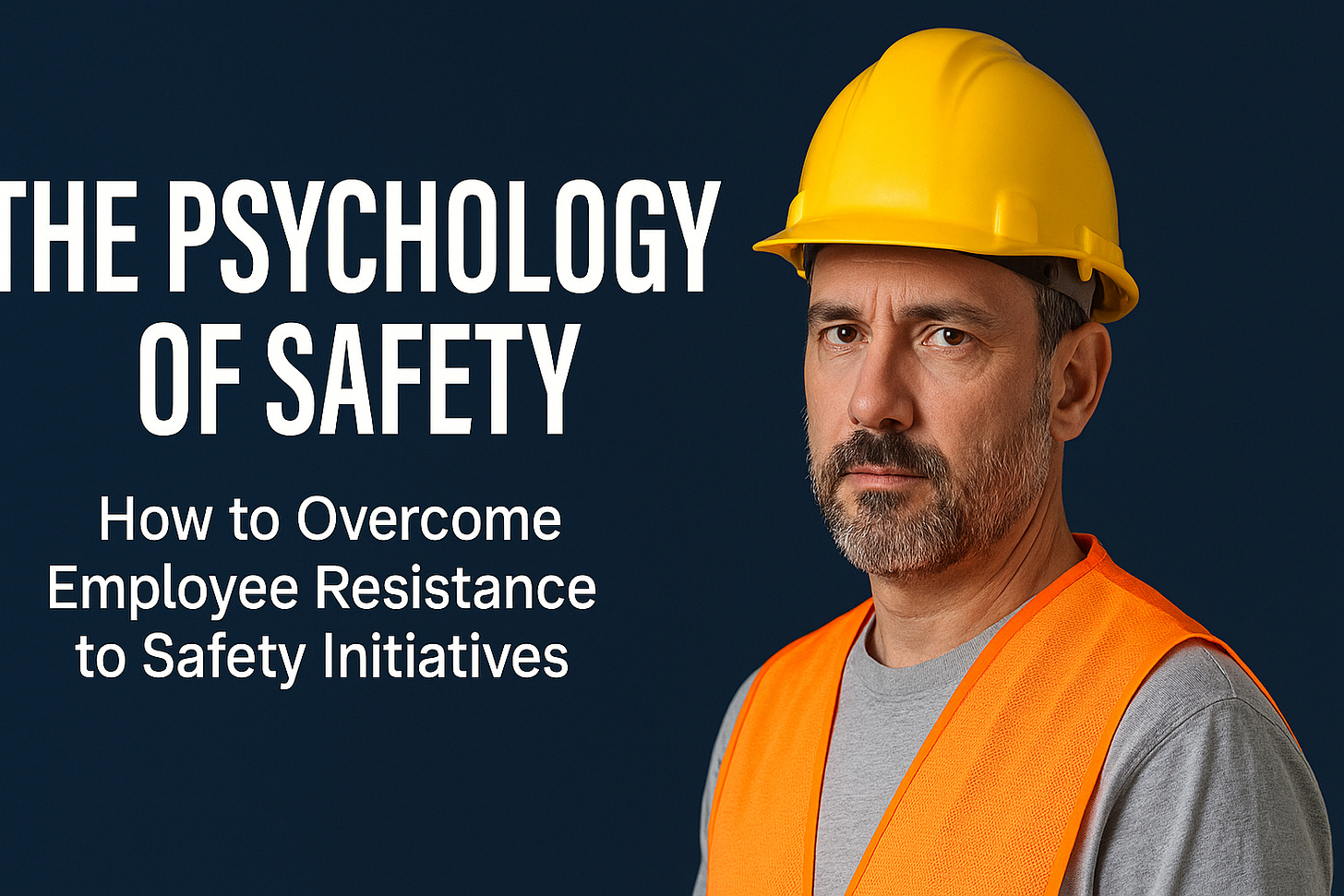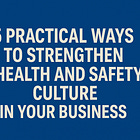The Psychology of Safety: How to Overcome Employee Resistance to Safety Initiatives
Hey there, hope you had a great long weekend and a chance to refresh and relax!
This week I want to take a look at the psychology of safety and talk about why people don’t always follow safety protocols.
You would think that safety rules and procedures would be an easy sell. No one wants to get hurt.
Once you establish a safe work plan for a particular job, it’s a no-brainer that people would follow it to stay safe. Right?
If you’ve been in safety as long as I have, you know this is rarely the case.
The simple truth is, it’s not enough to have policies, procedures, rules and regulations in place to keep workers safe.
You have to get people to actually follow them.
In this issue:
· Why people take shortcuts.
· Overcoming “It won’t happen to me” bias.
· Using targeted communication to influence behaviour.
One thing that trips up many safety professionals is the fact that the psychological aspect of safety is just as important as rules, policies, or procedures. Your safety program is only as effective as the actions of your employees.
All of the procedures, training and regulations in the world mean nothing if you can’t get people to follow them.
Read that again.
Let’s take a look at why this happens and what you can do about it.
Why People Take Shortcuts
In my 13-plus years of experience, 80-90% of incidents happen when people are rushing, distracted or taking some sort of shortcut. Yet no matter how many times I warn against it, people still make this mistake.
Why does this happen?
Pressure to save time or meet production goals. Work pressure, deadlines and quotas are a fact of life. But when workers fall behind (or want to get ahead), the temptation to skip safety procedures, rush or take the easy way out can be substantial.
Overconfidence from repetition or familiarity. Some workers, especially your most experienced workers, are prone to becoming overconfident and underestimating the risks of a particular action. Often, they’ll get away with taking risks many times and start to underestimate the risk. Until the one time that something goes wrong …
Influence of peers. In some workplaces, taking risks and skipping steps to get the job done is encouraged. The overall culture is one of production first and everything else (often including quality, safety and customer experience) after. If this is your workplace, you’ve got your work cut out for you to change it. Start small and celebrate every win you can.
It’s just easier. Sometimes the simple answer is that workers prefer the path of least resistance. If following safety procedures becomes difficult, time consuming, or cumbersome, some percentage of workers will skip it just to make life easier on themselves. Again, people can get away with it for a while, until one day something goes wrong, and they regret it.
Regardless of the reason, finding ways to get employees to follow the right procedures consistently is a big part of any safety professional’s responsibility.
How to Overcome “It Won’t Happen to Me” Bias
Nobody comes to work in the morning thinking that today is the day they’re going to get hurt.
And yet, to hundreds of workers around the world each day, that’s exactly what happens.
One reason this happens is optimism bias. People frequently believe they are less likely than others to experience negative events. Psychologist Tali Sharot has done extensive research in this area and found that this bias is widespread and persistent in society.
In the workplace, this shows up as people not believing they will experience an accident despite seeing and knowing the hazards around them. Even when people are presented with accurate hazard information, they tend to only believe it if the new information is positive. The result is that workers often underestimate the level of risk they face.
Another reason is alarm fatigue. Workers become de-sensitized when exposed to frequent low critical alerts. This is essentially the “Boy who Cried Wolf” effect.
When workers are constantly warned about minor hazards, they start to pay less attention to any warning and become complacent about the actual risk.
So how do you combat these tendencies?
Use real stories and case studies that make risks feel personal. Grounding safety information in real events rather than theory makes it seem more real and has greater impact.
Encourage reflection and ownership of safety choices. Don’t just lecture about safety, encourage workers to reflect on safe choices and the consequences of making a wrong choice. Allowing workers to lead a team safety talk is a great way to encourage this. Give people a chance to speak up and contribute without fear of retribution.
Reinforce that safety incidents can happen to anyone, regardless of experience. Help workers understand that incidents are not just something that happens to someone else. They can happen to anyone, without warning, and the best way to prevent them is to follow established procedures every time.
Using Targeted Communication to Build Good Habits and Influence Behaviour
Your best defense against these natural human tendencies is targeted communication.
One-size-fits-all messaging doesn’t work because people have varying motivations and communication preferences. Generic communication simply won’t resonate with most workers. If you want to get the message through, you’ll have to:
Segment your communication by role, task, or experience level. Individualized communication is critical. Newer workers have different concerns than experienced workers, front line workers face different hazards than office workers. If you don’t want your message to go in one ear and out the other, you’ll have to tailor it to the right person at the right time.
Repetition and reinforcement to strengthen habits. Studies show that up to 70% of information that is communicated verbally or in writing and not reinforced will be forgotten in 24 hours. If you want your message to stick, you’ll have to repeat it often. When your workers know what you’re going to say before you say, that’s a good sign you’ve gotten the message across.
Making safety reminders specific, actionable, and relatable. Give people information that they can actually use. General reminders have their place, but you’ll get better traction with specific, direct advice that relates to the worker’s daily experience.
Use peer leaders or champions to model safe behaviour. No matter how much people respect you as a safety leader, worker peer groups have the biggest influence on behaviour. If you can get worker leaders to model and promote good safety practices, your job as safety professional will be much easier.
The key point I want you to come away with today is that safety is not just about procedures and policies, but about understanding human behavior.
By addressing why shortcuts happen, overcoming biases, and using targeted communication, leaders can create a safer, more resilient workplace culture.
That’s it for this week, thanks for tuning in.
If you’re struggling with any aspect of health and safety in your workplace, let me know in the comments. I’ll make it a focus of a future article and perhaps we can chat and share perspectives.
Safety Pro Weekly is published every Tuesday on LinkedIn and Substack.
Have a great week,
Dan.






Thanks for this comprehensive rundown. Wow, there are a lot of obstacles to keeping people safe in the workplace. I do stress management training, and I sometimes speak to folks in charge of safety, such as at a Canadian gold mining company. Stress is another factor in people not being smart with safety, since it's a big distraction that undermines focus and keeps people from thinking straight. Is stress a safety factor in some of the places you work with?